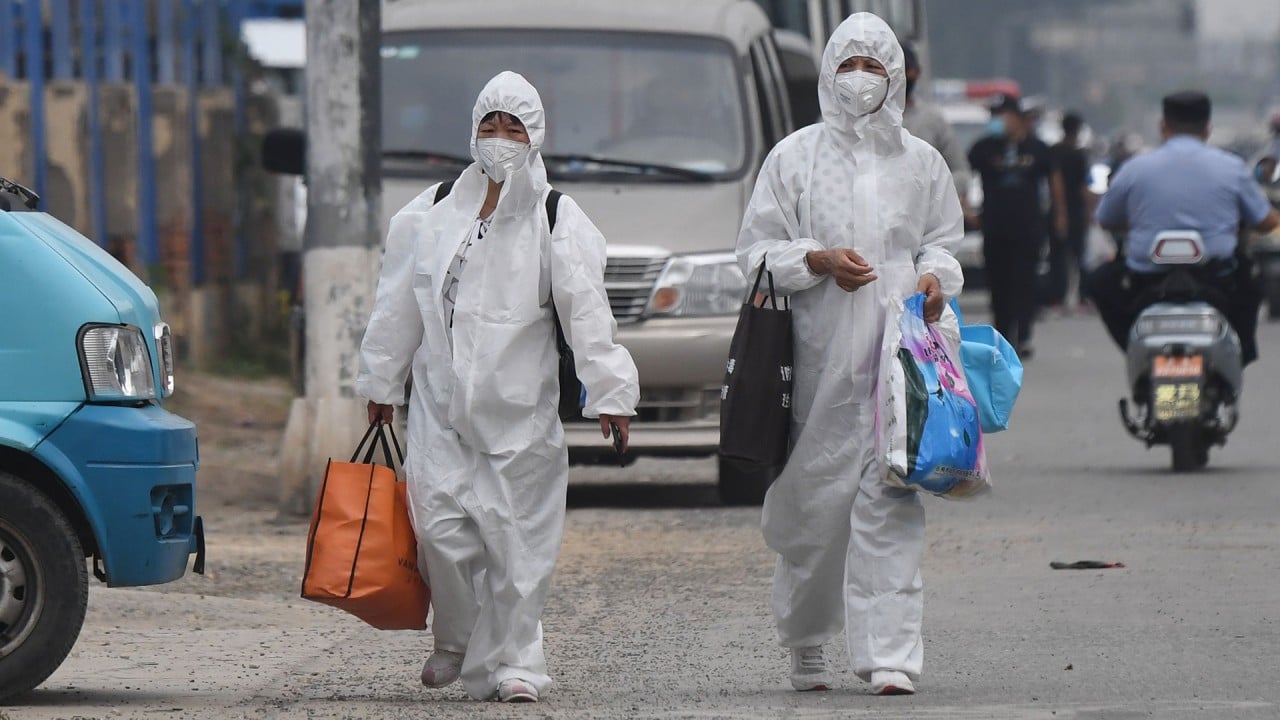
Coronavirus: Beijing’s economic recovery from June outbreak offers hope ahead of China GDP release
- Outbreak at the Xinfadi wholesale food market sprang up in Beijing in June, but shops, bars and restaurants have since largely reopened
- China is set to announce its second quarter gross domestic product growth rate on Thursday, with many economists predicting a sharp rebound
The sight of more than a dozen patrons sitting on stools outside a popular barbecue restaurant on Beijing’s famous Gui Jie food street waiting to be seated is not only good for China’s services industry, but also offers hopes that it can maintain a delicate balance between containing the coronavirus and growing its economy.
Back in mid-June, only a handful of the usual throngs of local residents, expats and tourists would have been found, with only a handful of customers seated at a popular crayfish restaurant that would normally require over an hour’s wait to get a table.
Now, with masks removed or tucked under their chins, friends are comfortable to chat across a table after the government declared last week that the area was low-risk, providing a huge relief to some of the restaurants who had been forced to close at the height of the most recent outbreak.
“You can’t keep stopping everything just because of this disease, life has to start anyway,” said a customer in his 30s at a bar on Gui Jie, eyeing the queues of people outside the other restaurants.
“[Covid-19] may become a common disease just like the flu, we only need to wait for the vaccine now.”
Beijing’s recovery of economic activity, though, is not fully complete, with a number of bars and restaurants in Sanlitun, a famous shopping and entertainment area in the Chaoyang District, still closed even though the neighbourhood has also been rated low-risk.
Consumers had already flocked back to shopping centres the previous weekend, although they are now required to register for a tracking app, which is necessary to enter all public areas from convenience stores to office buildings.
China was the first major country affected by Covid-19. However, thanks to the draconian measures it implemented to contain the virus, it is also the first major country to reopen most of its economy
But still, Beijing’s swift containment of the outbreak, which first occurred on June 12, means it can again try and resume both social and economic activities, a fine line that many other countries, including the United States, are finding it hard to tread.
“The government was really fast and decisive in bringing the outbreak under control, not like the US or Brazil,” said the manager of a shisha bar near Lama Temple in central Beijing, who lost nearly 90 per cent of his afternoon business in the weeks following the latest local outbreak.
“China was the first major country affected by Covid-19. However, thanks to the draconian measures it implemented to contain the virus, it is also the first major country to reopen most of its economy,” Lu Ting, chief China economist at Nomura wrote at the end of last month, having doubled his growth estimate for the second quarter to 2.6 per cent from the previous forecast of 1.2 per cent.

01:39
New coronavirus outbreak at Beijing food market fuels fears of second wave of cases in China
Hu Yifan, chief China economist at UBS Global Wealth Management, expects the Chinese economy to enjoy a rapid recovery, returning to growth in the second quarter to avoid a technical recession, defined as two consecutive quarters of negative growth.
“Beijing’s success in containing its local outbreak may serve as a blueprint for other cities on how to keep the virus in check without sacrificing economic recovery,” analysts from Trivium China, a think tank based in the capital city, wrote in a note on Wednesday.

02:24
Coronavirus: A look inside China’s Wuhan Institute of Virology
The Beijing Daily, a newspaper linked to the Communist Party’s Beijing municipal committee, wrote in a commentary article on Thursday that the capital city would pursue both the containment of the outbreak and economic recovery at the same time.
Overall, data shows that Chinese citizens have resumed travel and increased spending, a further sign of the continuing recovery from the pandemic.
The country’s railway system had a total of 166 million passengers in June, an average of 5.33 million per day, up 9.4 per cent from the previous month, according to the China State Railway Group.

